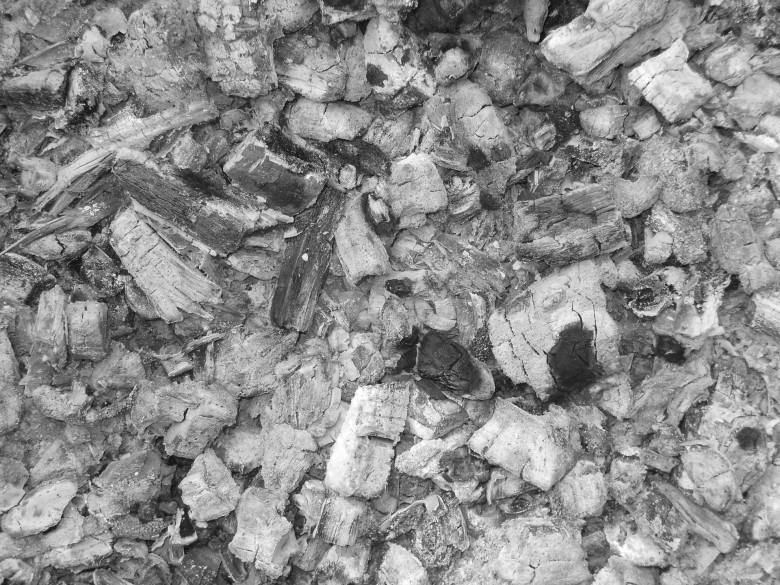 Ash is one of the simplest and most common fertilizers for any gardener. But this simplicity is apparent, in fact, it is fraught with many surprises and is not suitable for every garden culture. What are the beneficial substances for plants in this substance?
Ash is one of the simplest and most common fertilizers for any gardener. But this simplicity is apparent, in fact, it is fraught with many surprises and is not suitable for every garden culture. What are the beneficial substances for plants in this substance?
Is the powder left over from burning trees and grasses equally good? How to properly feed different vegetables and fruits with gray ash?
Content
What is contained in the ash
After parts of trees or grass are burned, all the chemical elements except the nitrogen that they contain become an integral characteristic of gray small residues. Three dozen minerals, including potassium and iron, magnesium and calcium, manganese and phosphorus, take on a form that is easily absorbed by crops cultivated in the garden.
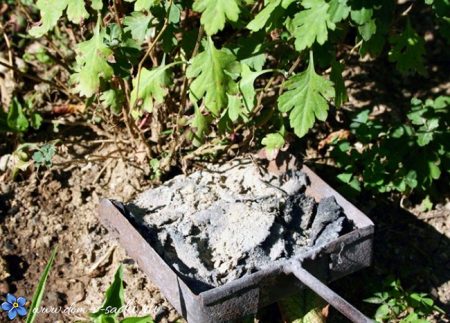
The point effect on the cultures of the individual components of the burned wood is as follows.
- Calcium carbonate it stimulates seedlings to the fastest growth, in some crops it shortens the ripening time. Flowers become larger, inflorescences more pronounced.
- Plants do not always absorb fertilizer elements. This feature helps to improve. calcium silicate.
- Calcium sulphate affects the gardening of seedlings, increasing it at times.
- Helping the trees grow stronger and survive harsh winters calcium chloride. It also makes possible the cultivation, for example, of grapes in cold climatic conditions. This element “dries” crops and soil. It is necessary so that the tomatoes do not blacken, and the carrots do not crack. Thanks to him, grapes do not fall prematurely and strawberries do not mold.
- If the summer is dry, rock salt will ensure the vital activity of fruits and vegetables: it is because of it that moisture is stored and retained in the cells.
- Potassium salt contributes to winter hardiness of trees and is useful for garden flowers.
- For the roots of roses is indispensable magnesium, it also has a beneficial effect on metabolism in cereal crops.
- Sodium interacts with enzymes that do not contact with other elements. Due to sodium, enzymes begin to participate more actively in chemical reactions.
Which ashes are better
Burnt wood is different in composition. It depends on the age and type of burned shrub or grass. Young shoots give more potassium, in old wood the calcium content is much more noticeable. Hardwood, such as oak and poplar, elm and ash, has more potassium in its composition than soft spruce, pine and aspen. Burning leaves and dry grass leave behind a lot of potassium.
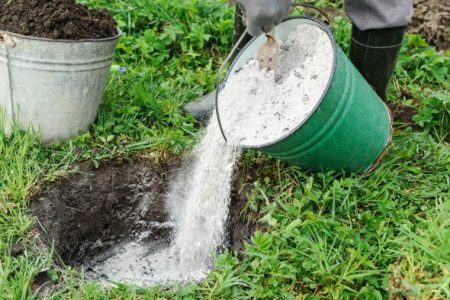
What is the best burned substance for the garden? The question is controversial. It all depends on what goals the gardener has: what is difficult watering for and what trace element is in short supply in this vegetable. For example, more phosphorus will be contained in oak ash, and potassium in buckwheat straw. Spruce wood burns, leaving behind the most modest percentage of potassium, but such a residue, like no other, is rich in calcium.
| Ash element / composition | Birch | spruce | oak | buckwheat | rye | wheat | potato greens |
| phosphorus | 7-8% | 2-3% | 9-10% | 3-4% | 5-6% | 4-9% | 6-8% |
| potassium | 13-14% | 2-4% | 24-36% | 11-14% | 9-14% | 9-17% | 20-25% |
| calcium | 36-40% | 23-25% | 50-75% | 15-19% | 9-10% | 5-7% | 27-32% |
How to get feeding ash
In the garden should be allocated a special place for the disposal of trees, dry grass and shrubs. From a fire site to landings, five to ten meters should be maintained. Burn material should only be in calm weather, while controlling the power of fire. Firewood or straw is thrown into the fire gradually.
Many gardeners, trying to minimize the contact of fire and soil, burn wood waste on iron plates. It is not always effective. The remaining substance is collected in a cold form, after a couple of days, and from an open space under a breeze, it can be sprayed throughout the garden. Iron barrels of 200 liters are more suitable here.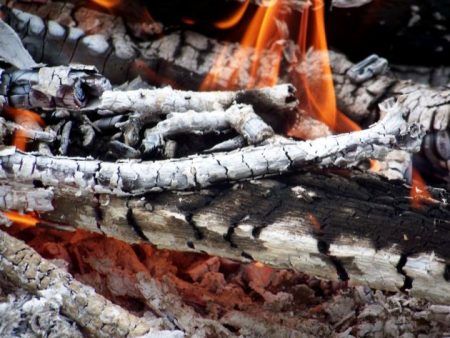
Storage of the resulting product is carried out in tanks with lids. Collect it in plastic bags and close them tightly should not be, as condensation may form. The wood powder itself must be dry and fine.
Ash solution preparation
To improve garden crops, the most commonly used ash solution. It is bred simply and ready for use immediately after preparation. If we are talking about a solution for soaking seeds, then we take 200 g of water, dissolve a teaspoon (2 grams) of gray suspension in it. Seeds are disinfected in it from two to five hours (depending on size), dried and sent to cups with earth.
To work on the scale of the entire garden, a glass and a half of powder (150 grams) is taken on a bucket of water and, not allowing solid particles to settle to the bottom, the contents of the bucket are poured under the trees.
Preparing a decoction of ash
Ash broth is prepared a little longer, but the period of its effect on the roots is extended. To prepare boiling water in a bucket, add the combustion product in a ratio of 3: 1. The mixture is infused for a couple of days, filtered and refilled in a spray bottle.
Some gardeners mix, diluted in the same proportion, boil on fire for half an hour. If you add ordinary household soap to it, when spraying it will stay longer on foliage and branches and additionally protect the culture from invading aphids.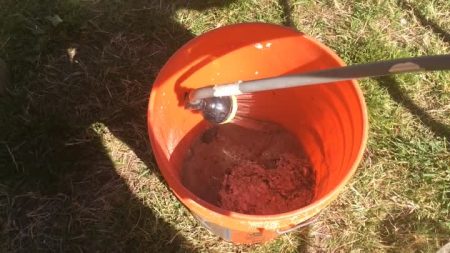
You can also cook a concentrated mixture (a glass of suspension per liter of water). Three liters of such a cocktail are diluted with water for irrigation up to 10 liters of volume. Watering is based on the calculation of a bucket per one and a half square meters of area occupied by vegetables or flowers.
Use in the garden
"Gold from the furnace" is useful for most garden crops. Carrots and beets, cabbage and potatoes, fertilized by them, grow faster, give a large crop, tolerate winter frosts well. According to the standard, 10 square meters of the area occupied by fruits and vegetables account for from one kilogram to two gray matter.
The product of wood burning is indispensable on lands with an excess of clay. It makes the soil more fluffy, loose and lowers the acidity level if up to 7 kg of powder is distributed per 10 square meters.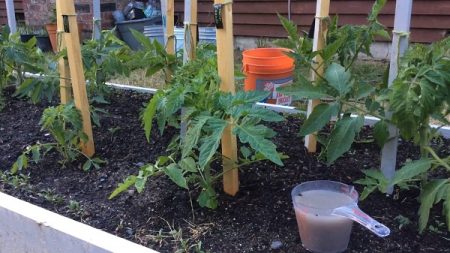
Bulk material is added to such lands during digging, which is carried out in the winter. In spring, gardeners use it on soils with an increased amount of sand.
Unlike the bulk of chemical fertilizers sold, a natural substance acts on soils for up to 4-5 years.
When measuring the prescribed number of grams of the substance in question, it should be borne in mind: 1 teaspoon holds 2 g of suspension, 1 tablespoon - 6 g. 100 grams are placed in a standard 200-gram glass, and a pound of powder is placed in a liter jar.
Fertilizer Methods
Feeding the soil, as well as using ash broths, powder or solution, can be done in the garden in various ways. Their choice depends on the ultimate goal of preventive measures.
Top dressing
Effectively adding ash directly to the roots. The main rule here is not to sprinkle clean powder and not to spread roots on it. Be sure to mix the ash with the ground or other components, and only then engage in planting.
At the stage of planting seedlings, one to three tablespoons of the substance is required for each hole. At the time of rooting, add a glass of gray “flour” to the bushes, and about a kilogram of fruit trees.
Foliar fertilizer plants
Foliar dressing refers primarily to sprinkling and spraying with a granular substance.
Sprinkling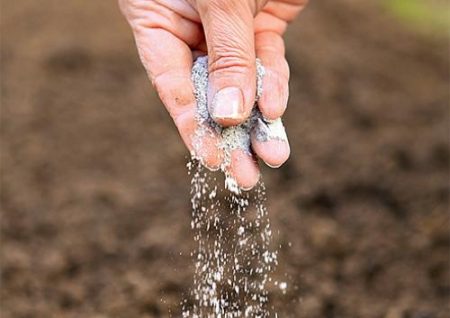
You can scatter the remains of a fire in the garden throughout the season.
When fruits begin to set in trees and shrubs, the wood suspension is not only scattered around the trunk, but also on the leaves to scare away the pests. In autumn, this substance is added to the soil during the winter digging.
Layers of compost are also sprinkled with ash to improve decomposition processes. Proportion - for 3 sq. M area - 1 cup of powder.
Pollination can also be useful if the roots of a shrub are damaged. Such an approach will help them recover as soon as possible.
Spraying
The spraying process is carried out either with ash solution or strained broth. The object of spraying can be not only stems and foliage, but also tubers and seeds of garden crops. Spraying is done with a spray gun, so the mixture must be filtered before use.
With direct access of the powder to the vegetative organs, its trace elements are absorbed faster by the plant than when sprinkled under the root. This method allows you to get a thicker foliage, brighter colors of buds and simultaneously get rid of a number of pests and fungi.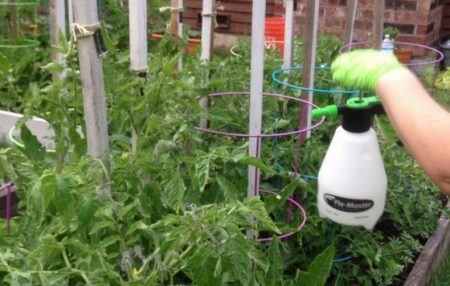
Fertilizer seedlings
It is worth starting to take care of the crop long before the seedlings begin to please the owner with succulent foliage. We disinfect them and stimulate the active development of seeds: we soak them in an ash solution for five hours.
Then, before lowering the seed into the hole, add a mixture of ash and soil. In order not to damage the roots with a high concentration of wood dust, we take a liter jar of soil, pour it into a container and add a tablespoon of our product there. This will avoid diseases that traditionally affect seedlings.
If the ground is not fertilized, and the seedlings are already rooted, you can feed it with an ash solution. The first such irrigation is carried out a week after planting (12 grams of “gold from the stove” per 1 liter of water). Mix, insist for a day, filter and water under the root.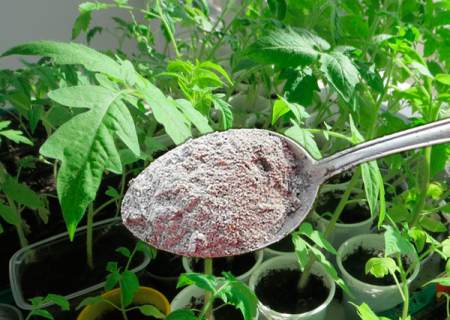
Spraying of young, only planted stems, can be carried out with the same broth. Surface spray will scare away harmful insects from the leaves.
Feeding in the greenhouse
Greenhouse plants require special attention of the gardener and more frequent feedings with useful trace elements. Although there is also a reasonable limit: for example, it is possible to introduce combustion products into greenhouse crops no more than six times per season.
Before planting seedlings, we fertilize the soil in the same way as described above. When the stem releases two or three first leaves, we make the second processing. As soon as the first inflorescences appear, the turn of the third top dressing comes. The next watering is carried out with the advent of the first fruits. Next, we turn to the product of combustion of wood, if necessary.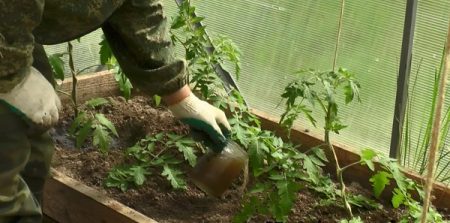
Ash can be delivered to the plant in different ways: sprinkling (but after it it is imperative to spill the soil with warm water), pour it with infusion or ash broth. Such a scheme is acceptable for greenhouse cucumbers.
What plants benefit from ash
Ash is the most democratic fertilizer for the garden; almost all cultivated plants are pleased with it.
The effect of processing in the shortest possible time will be noticeable on pumpkin, tomato and cucumber beds. They will delight with more frequent ovaries, active growth and size of the fruit.
The lack of elements contained in the wood loose substance on the beds with cabbage will be immediately noticeable: its tops begin to turn red, it practically does not grow. To reduce the acidity of the earth and activate growth will help ash solution or a simple sprinkling.
Zucchini, ordinary radish and carrots are fed with a sprinkling of ash (1 cup per 1 sq m of soil). Onion and garlic plantings require a variety: powder feeding alternates with bird droppings. The main thing is not to carry them out immediately after each other. The plant should be given time to absorb nutrients.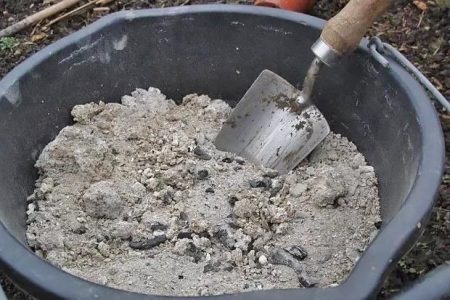
Plum and cherry trees need only one fly ash in three years. The solution is poured into pre-prepared grooves and covered with earth from above. A hundred grams of powder per plant will be enough.
Currant bushes also increase the number of berries from such straits. A mixture of water and a gray suspension is poured into the root zone.
Plant nutrition
Despite the fact that the general principles for processing garden crops are the same, the approach for specific plant species has its own nuances.
Cucumbers
We feed either sprinkling or pouring with a solution. Cucumbers are capricious and tender, so they should be treated with ash no more often 4-6 times for the entire season. Additional introduction of the substance can be carried out at the time of the general autumn digging of the garden.
The liquid option is 2 tablespoons per liter of water (infuse and filter), dry - a glass per square meter. To combat aphids, you can spray the leaves by adding laundry soap to the solution.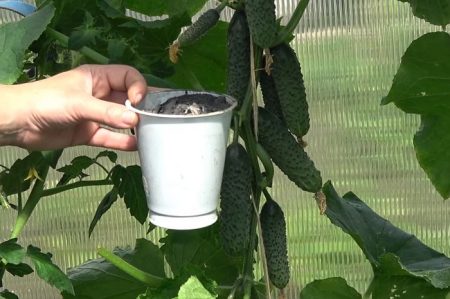
Tomatoes
To fertilize tomatoes in a bucket of water, pour one and a half glasses of the product from the stove. One stem requires half a liter of mixture for the full development. Around it, we dig out shallow grooves, fill in the liquid and level it with earth.
For the prevention of diseases, we prepare the contents of the atomizer: pour 3 cups of wood dust with water, boil for 30 minutes, cool and insist for a day. We filter and breed in a 10-liter bucket of water. Add 50 g of laundry soap. This will not only protect tomatoes from diseases, but also scare away pests. If the plant suffers from slugs, simply sprinkle ash near the roots and loosen the ground.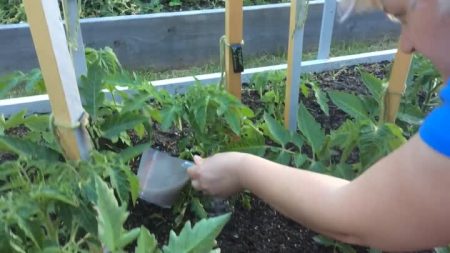
Pepper
Excellent top dressing of peppers - ash mixed with nettles. Mix a tablespoon of powder and 10 tbsp of burning shoots, fill with water. We insist for a day, filter, add to a 10-liter bucket of water and feed the seedlings.
If you have to work with a spray, you should reduce the concentration of the wood component, so as not to burn the leaves. Spray water should be warm. Spray the mixture over the entire sheet - both on the outside and on its inside, the stem should also be processed.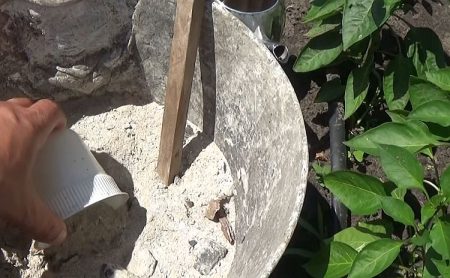
In addition, “gold from the stove” is introduced into the ground during the autumn digging.
Onion
Onions respond especially gratefully to the product of burning birch, where the potassium content is increased.This fertilizer increases the amount of vermicompost in the earth, particles of plant origin cross over faster in it and the soil becomes more fertile.
If the use of a wood product occurs, the onion heads last longer and do not rot. Potassium is present in the ash, which is extremely important for onions. With its lack, it turns yellow and dries, yellow spots are visible on the arrows.
Onions are treated with wood substance at the stage of preparing leek seeds (soak for six hours in a mixture of powder, 1 tsp, and water). Bulbs intended for planting are sprinkled with ashes per day.
Fertilizer is introduced in the form of:
- two-day infusion (250 grams per 10 liters of water - under the root);
- daily infusion for spraying from pests (100 grams per liter of water);
- dry sprinkling (100 grams per sq m).
Garlic
The fungus, often affecting the heads of garlic, disappears if the bed is treated with a mixture of dust from the stove and soap, diluted in plain water. It can be an elementary solution (100 grams of ash per 10-liter bucket of water), or it can be a decoction (pour 20 g of powder with water, boil for half an hour - and dilute in the same bucket).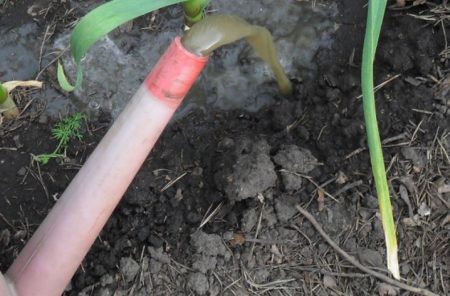
Processing takes place twice a month or when necessary, when diseases, pests or signs of deficiency of trace elements appear. To prevent powdery mildew, garlic is treated with decoction in the second decade of June, to which 50 g of laundry soap is additionally added.
Recall, along with fertilizer, one of the most effective means of prevention is the timely weeding of garlic.
Potatoes
When using a wood burning product, potatoes are less affected by the Colorado potato beetle, tubers contain more starch and are not susceptible to late blight. When the garden season comes to an end and the harvest from the potato beds is harvested, it's time to think about the soil. If the earth is clayey, during autumn digging they contribute 100 grams per square meter, if sandy, the procedure is carried out in spring.
Before planting, the sprouted tubers should be powdered with ash: a kilogram of bulk product is scattered on a bag of potatoes. At the time of planting, 40 g of suspension are added to each pit. When the first flowers appear on the stems, half a glass of the substance is sprinkled under the root.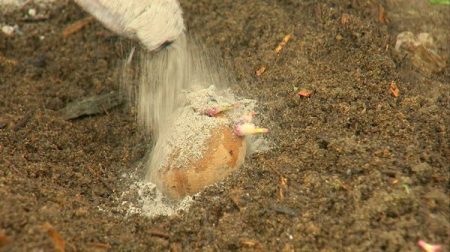
If top dressing is a solution, dilute one and a half cups on a bucket of water. Water in the morning so that moisture does not remain near the growing tubers at night.
Cabbage
Cabbage seedlings will be less prone to invading slugs if you periodically apply an ash broth or scatter dust from the stove around the plants. If the weather does not please, the rains do not stop, processing should be carried out more often than in the arid hot summers.
When planting seedlings, 40-50 grams of the drug are poured into each hole. This will protect the culture from diseases such as keel and black leg. When digging the land at the end of the garden season, add 100 grams per square meter to the cabbage bed.
Beetroot
Gardeners always have beets and carrots nearby: they are sown at the same time and harvested on the same day. Often the beds are nearby. Not surprisingly, the proportions of fertilizers required are almost the same here. This is fully true for ash compositions.
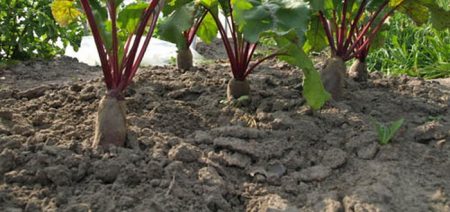
When the bed is dug in anticipation of sowing seeds, add a glass of powder per square meter. If you sprinkle with material already dug up the earth, it can seize the crust. In this case, breaking through the seeds to the light through it will be more than problematic.
As soon as the first sprouts appear, again sprinkle the beds with wood substance. Immediately spill the seedlings abundantly so that top dressing leaks to the root crops. This approach will not only fertilize the soil, but also protect the crop from pests.
Zucchini
If the land intended for planting zucchini has a high clay content, we add washed river sand, a tablespoon of superphosphate and three tablespoons of ash per square meter.
Before planting, squash seeds are soaked in a liter jar of water, where 2 tablespoons of wood combustion product are bred. When green peppers appear on the stalks, water the bushes with a mixture of urea (1 tablespoon), wood product (2 cups) and 10 liters of water.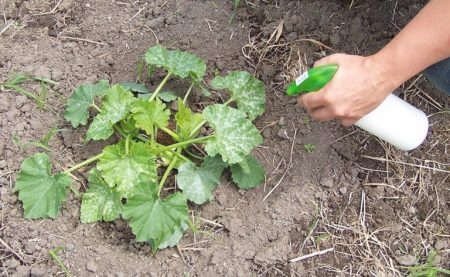
If the leaves are affected by brown spots or begin to turn yellow, they can be poured with a solution of 200 g of powder in a 10-liter bucket of water. When dry, the medicine from the oven goes into the grooves around the root of the zucchini.
Strawberry
Wood fertilizer is admitted to the strawberry garden three times a season: at the beginning, when the snow is gone and the top layer of the earth warms up a bit in the early spring sun, after harvesting the berry harvest and in the fall, during the global digging of the whole garden.
When the first green leaves make their way through a layer of last year's foliage and gardeners begin to clean and loosen the bed, it is time to pour a gray suspension. About 15 grams of the substance not only stimulate a more active growth of greenery, but also prevents the occurrence of gray rot.
When the last strawberry left the garden, and the crop goes canned in jars in the form of compote and jam, the bush does not cease to exist. It is during this period that the buds of the next crop are born, the roots grow. Each bush should be shed abundantly with an ash solution or infusion.
Traditional fertilizer in the autumn is no different from other crops: a glass of powder per square meter of soil will allow strawberries to survive winter frosts and snowfalls.
Grape
A climbing plant does not like frequent invasion of its world: during the season, ash additives can be added no more than four times. The first - sprinkling - is carried out in early spring. The second - in early summer with preventive purposes. If signs of disease appear on the leaves, you can spray the plant in July.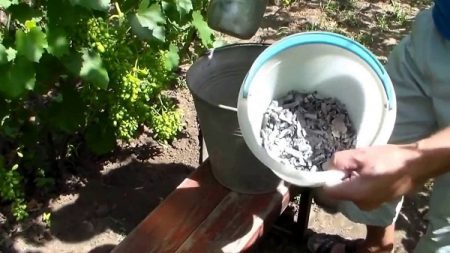
Grape processing is carried out in the evening after sunset. 350 g of powder is diluted in a liter of water, infused for 24 hours and stored in the cellar, in cool. Use infusion should be within a month. Before spraying, we dilute the concentrate in five parts of water and add grated laundry soap so that the spray lingers on the foliage.
The last processing is carried out in the fall after the grapes are removed from the branches. Each root is abundantly spilled with water on the eve of wintering; in the last bucket we pour 350 g of ash on each trunk. It is enough to carry out autumn top dressing every three to four years.
Trees and bushes
At the time of planting seedlings in the hole should be added a mixture of soil with 100 grams of wood substance. Such top dressing allows the roots to quickly adapt to a new place, air flows unhindered to the root system.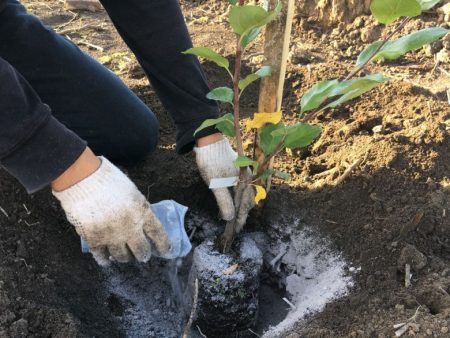
If shrubs and trees have been growing on the site for several years, to prevent diseases and saturate the plant with potassium, phosphorus and calcium, it is enough to fertilize them once every three to four years.
This can be done either by adding a couple of kilograms of “gold from the stove” to the grooves around the trunk, or by abundantly spilling near-barrel territory, adding 450 grams of wood dust to the last bucket.
Flowers
Top dressing flowers always has two goals: to grow a stem that can withstand the weight of the inflorescence, and to grow luxurious buds.
Annuals are fed a couple of times during the summer: 20 days after planting, to strengthen the stems, and at the time of the appearance of buds, to stimulate their development and extend the life cycle. Perennials are fertilized three times, including the introduction of ash before wintering flowers. When planting flowers do not fertilize.
Feeding methods - sprinkling, watering with a 2-day infusion (10 g per liter), spraying (20 g per liter). Flowers are fed either in the early morning, until the sun has risen, or in the late evening, when it has already set.
Indoor plants are fertilized in the same ways, adjusted for the area occupied by the soil.
Conclusion
Ash - the simplest fertilizer that is always at hand, from century to century has been proving its effectiveness.It is useful and environmentally friendly if in the process of preparation it did not include the “benefits” of civilization - polyethylene, paint or old glossy magazines. Ashes will be beneficial in the garden, if he, in turn, will pay attention to the gardener. Properly cook, carefully preserve and will accurately comply with the proportions of fertilizing.

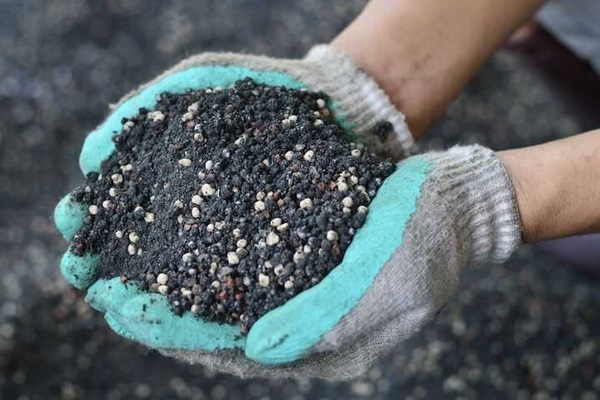
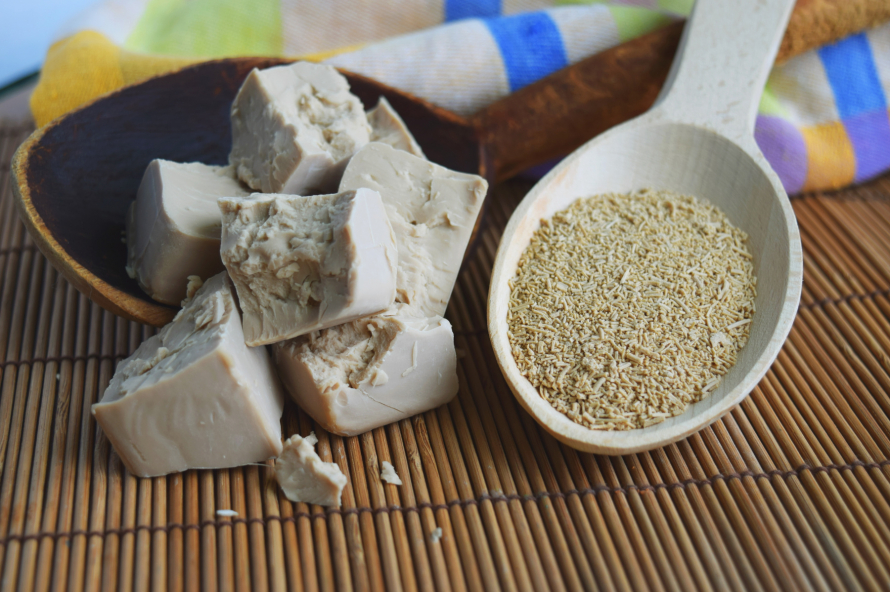
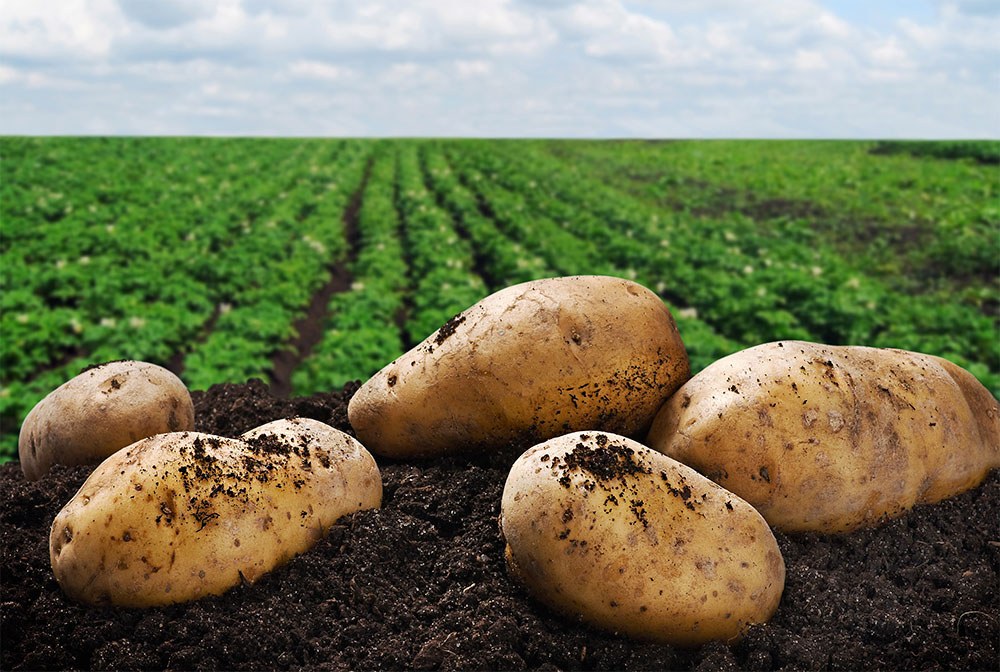
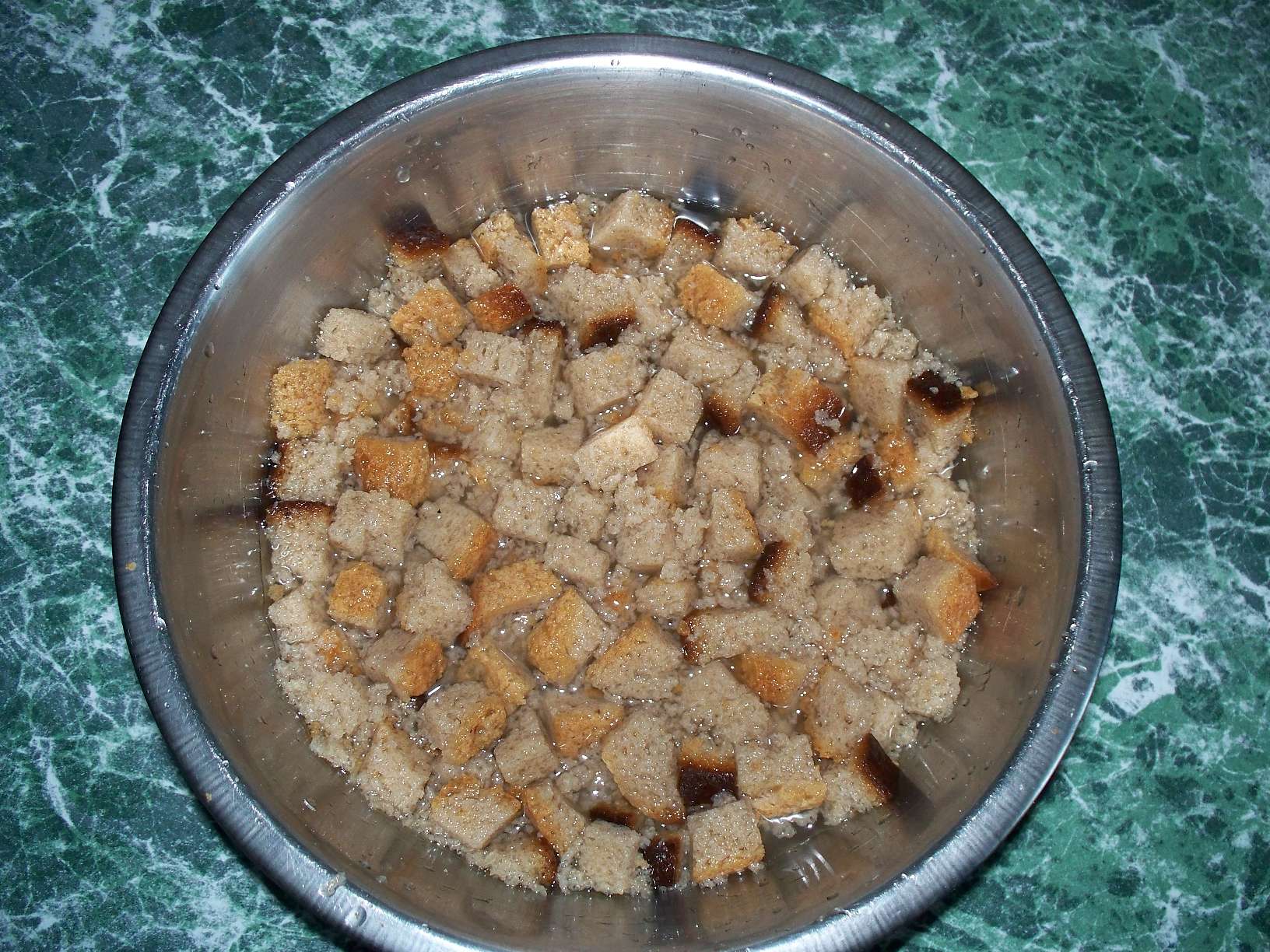 How to make bread infusion for feeding cucumbers
How to make bread infusion for feeding cucumbers Superphosphate: what is it and how to apply it
Superphosphate: what is it and how to apply it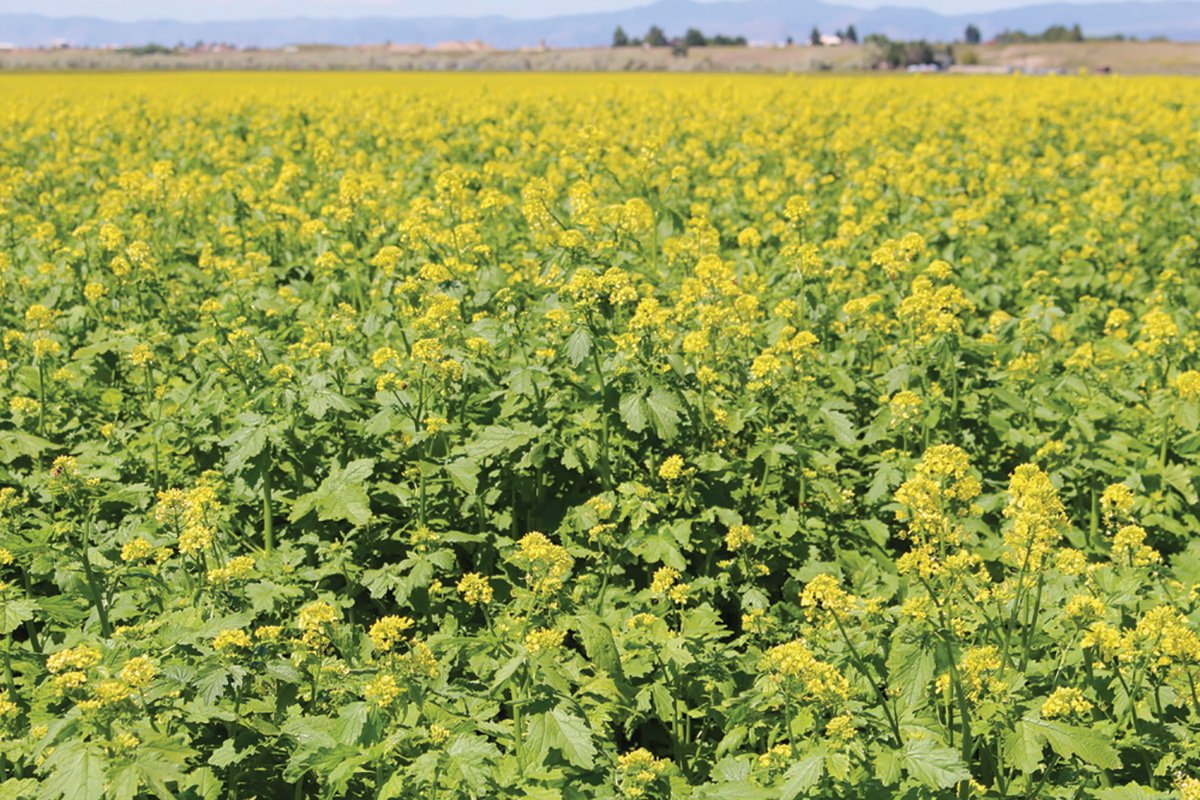 What problems can be expected from siderats?
What problems can be expected from siderats?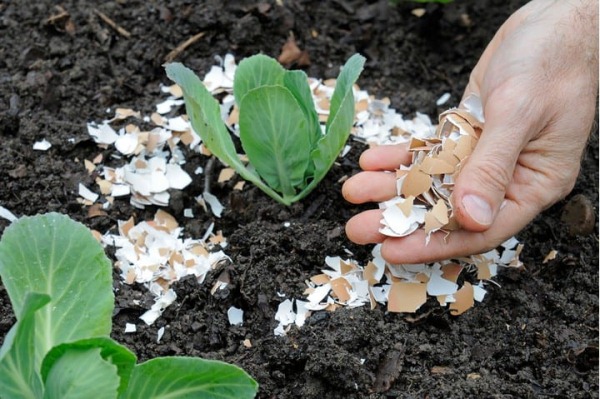 Secrets of the collection, storage and use of eggshells in the garden
Secrets of the collection, storage and use of eggshells in the garden